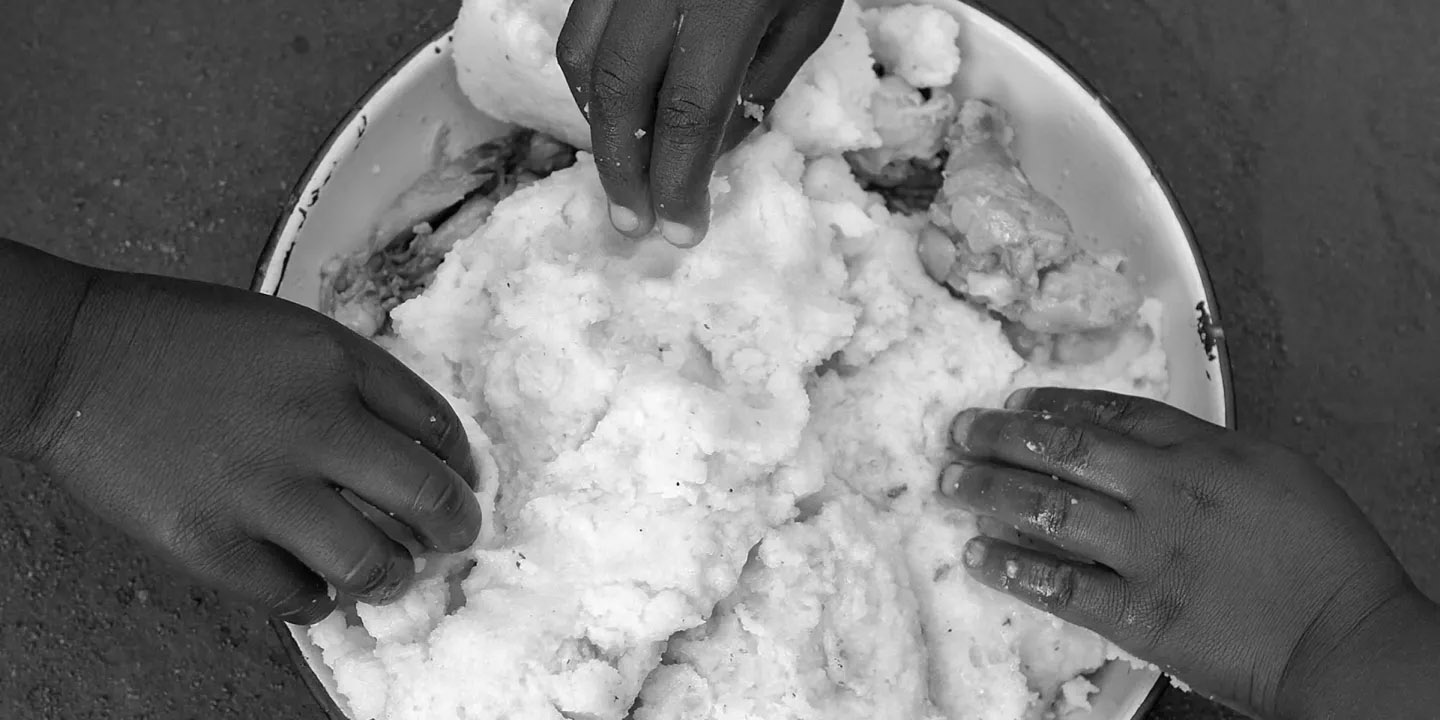Health Department records show that 973 children who had severe acute malnutrition died in facilities around the country, the Director-General of the national Department of Health, Dr Sandile Buthelezi, said on Thursday morning, 11 September 2025.
Underscoring the extent of the hunger crisis in the country, Buthelezi added that the figures excluded children dying at home or in private hospitals. He said that as the Health Department, they were often the last people to try to help the children.
“We are only seeing them when they are already dying,” he said.
“We are meeting in solemn and urgent circumstances,” SAHRC commissioner Philile Ntuli said as she opened the meeting. “This is not a symbolic hearing,” she said. “We want to secure clear accountability… This is not a natural disaster. It is a failure of the state.”
The commission subpoenaed several government departments to report back on what they had done to implement the recommendations of a report, issued in 2023, finding that child hunger in the Eastern Cape should be declared a state of disaster.
Read more: Child malnutrition in the Eastern Cape ‘qualifies as a disaster’
She said that 31 years after the fall of apartheid where malnutrition and hunger were used as tools to oppress people, the country’s children were still dying.
“This is a profound indictment. We do not expect generalities or evasions in this hearing,” Ntuli said, addressing those who had come to provide evidence.
Data provided by the national Department of Health stated that in the majority of cases, severely malnourished children died from other causes, including sepsis, acute diarrhoea, shock, tuberculosis, meningitis, cardiac failure, heart failure, acute gastroenteritis, pneumonia and liver failure.
Additional contributory causes of death in children with severe acute malnutrition included HIV infection, severe combined immune deficiency, heart disease (congenital and acquired), cerebral palsy, Trisomy 21 (Down syndrome), gastro-oesophageal reflux disease and spinal muscular atrophy.
Buthelezi conceded that working with the United Nations’ Children Fund (Unicef), the department had been able to identify a number of bottlenecks in the system that had contributed to the problem.
“Between January and September 2023, the national Department of Health in collaboration with Unicef undertook a malnutrition bottleneck analysis in selected districts in the Eastern Cape, Gauteng, KwaZulu-Natal and North West provinces. The purpose of the analysis was to assess barriers to coverage, uptake and quality of acute malnutrition and maternal nutrition services targeting children under five years and women of reproductive age.
“The analysis showed that there are key bottlenecks in the delivery, uptake and quality of both maternal and acute malnutrition services. The gaps identified range from specific bottlenecks in both the supply and demand domains. These include gaps in meeting the staffing norms to deliver efficient quality services; lack of adequate capacity building of the healthcare workforce to deliver services, barriers to geographic access to services; stockouts of essential commodities required for screening and management of acute malnutrition and maternal nutrition services; as well as gaps in initial and continuous utilisation of services by pregnant women and mothers of children with acute malnutrition.”
Referring specifically to the Eastern Cape, Buthelezi said it was of great concern that the Nelson Mandela Bay metro, where high levels of severe acute malnutrition were not seen at similar levels to rural areas in the past, now had among the highest levels of malnutrition in the province.
Read more: More than two dozen children have starved to death in Nelson Mandela Bay in the past year
In the past 18 months, he said, 37 children had died of severe acute malnutrition in the province.
Read more: Desperate mom in Nelson Mandela Bay keeps infant alive with cooldrink powder as food crisis hits SA
He added that the three provinces in the country with the highest numbers of deaths caused by malnutrition were KwaZulu-Natal, Limpopo and the Eastern Cape. The Western Cape’s numbers were the lowest, with 13 deaths in 18 months.
Buthelezi said the numbers in the Sarah Baartman District in the Eastern Cape, a health district that bordered on the Western Cape in two places, were also very low and there was a theory that this was due to its proximity to the Western Cape.
“Child deaths linked to malnutrition in South Africa are deeply rooted in socioeconomic inequalities that persist across communities, particularly in rural and township areas. Many households face chronic food insecurity, lacking regular access to safe, sufficient and nutritious meals. This is compounded by high poverty rates, unemployment, structural issues such as substandard housing, environmental hazards and lack of access to basic services such as water, sanitation, education and health,” Buthelezi said.
He added that all these problems exacerbated vulnerability, which restricted caregivers’ ability to provide adequate nutrition and early childhood care.
“The current economic situation in the country, with poor economic growth, job losses and reduced household income intensify these challenges, forcing families to choose between nutritious food and other essential expenses like rent or electricity.
“These socioeconomic factors, combined with inadequate childcare support and limited multisectoral coordination, contribute significantly to the high rates of malnutrition-related child mortality in South Africa,” he said.
Buthelezi added that the Health Department backed calls for the child support grant to be raised above the food poverty level, as well as a nutrition grant for pregnant women.
He also highlighted that the problem of malnutrition was being exacerbated by many communities’ lack of access to clean water, something that had decreased significantly.
“The General Household Survey 2024 shows that although the percentage of households in the Eastern Cape with access to water in the dwelling, on or off site, increased by 23% between 2002 and 2012, access has declined to 69,9% since then.
“Grants were notably more prevalent than salaries as a source of income in the Eastern Cape (65,6% vs 49,0%),” Buthelezi said. “Furthermore, 31,2% of households reported inadequate or severely inadequate access to food in the Eastern Cape, with Nelson Mandela Bay being reported as among the metros that are the mostly affected (33,4%).”
Stunting rate increase
He said the stunting rate in the Eastern Cape was now at 33.3% (the national average is 28.8%).
The Head of the Eastern Cape Department of Health, Dr Rolene Wagner, said there was a glimmer of hope as they were seeing a drop in malnutrition deaths, but they needed more data to see if this would be a trend. She said they were prioritising outreaches to find children before they were admitted to hospital.
Recounting one of these cases, she said that during a single outreach programme in a rural district community health workers found 80 children who were malnourished, and were able to save their lives.
“Transport remains a huge challenge,” Wagner said. “Mommies are seeking care very late.”
Disturbingly, she added, the department was now also finding cases of children under six months old with severe malnutrition. This had not been seen before.
She said this may be linked to teenage pregnancies in the province as there was data showing that teenage mothers did not breastfeed their babies.
Wagner said they had budgeted R21-million for supplement support. She added that while they experienced some supply chain management problems accessing this medicine last year, interventions from the national Department of Health and contract-based procurement had been used to address the problem. DM




 Close to a thousand children have died of severe acute malnutrition in the past 18 months in South Africa, the national Health Department said on Thursday. (Photo: Gallo Images / Sowetan / Sandile Ndlovu)
Close to a thousand children have died of severe acute malnutrition in the past 18 months in South Africa, the national Health Department said on Thursday. (Photo: Gallo Images / Sowetan / Sandile Ndlovu) 